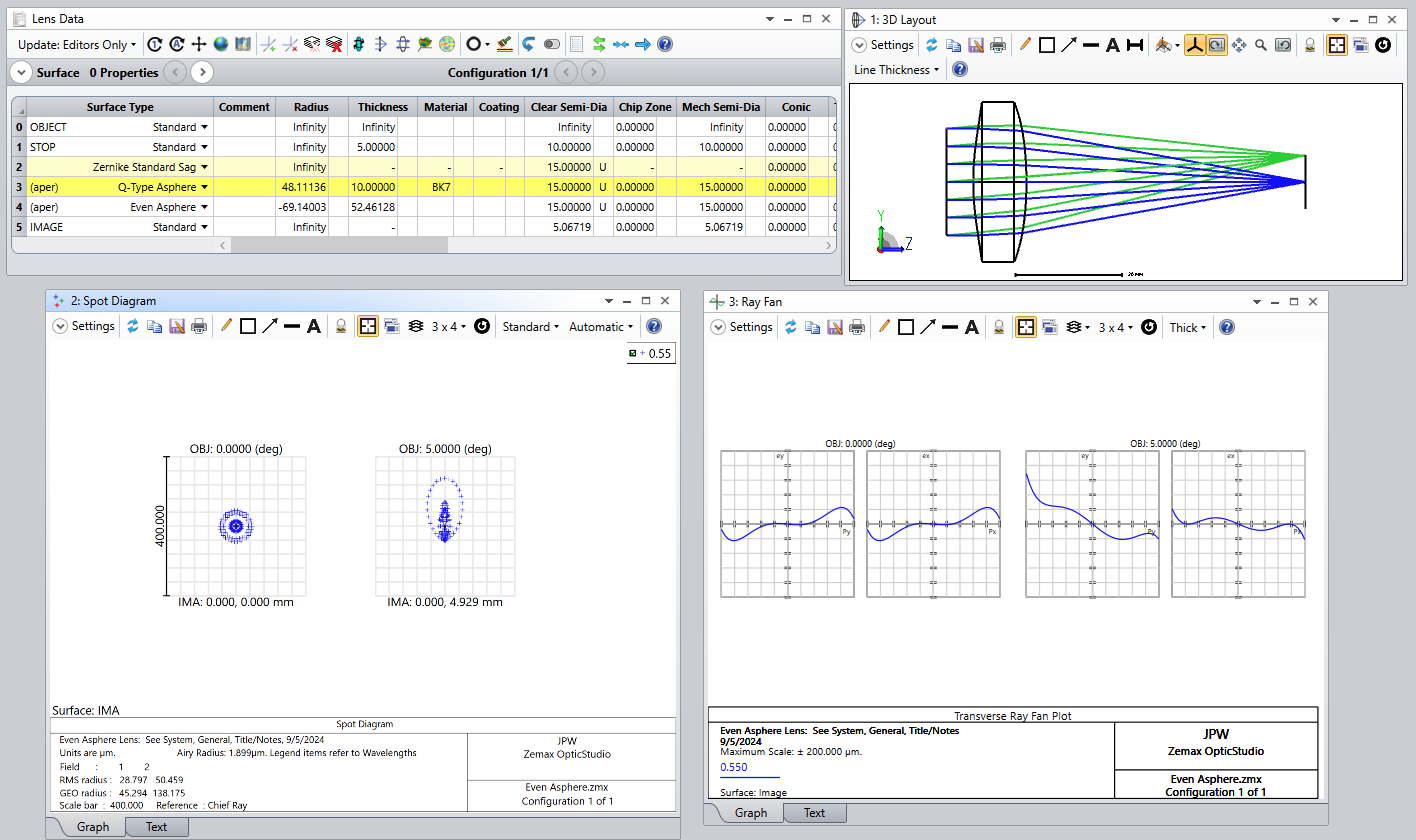Hello,
I am trying to add irregularities to a Q-type asphere surface. The way I do it is by inserting a Zernike standard sag surface, and setting it as a composite surface, so that my Q-type asphere is the composite base.
As a first step, I did not change the Zernike surface, so that its sag is 0 across all the surface. I set its clear semi diameter to the same value of the Q-type surface (both are user defined).
I expect that because the Zernike sag is 0, the system will not be affected by defining the composite stack. However, when I set it as a composite surface, it changes the ray tracing and the system is affected. It seems that the power of the lens changes, although I did not change the sag (as far as I’m aware).
Has anybody faced such problem? How can it be solved?
Thank you.





